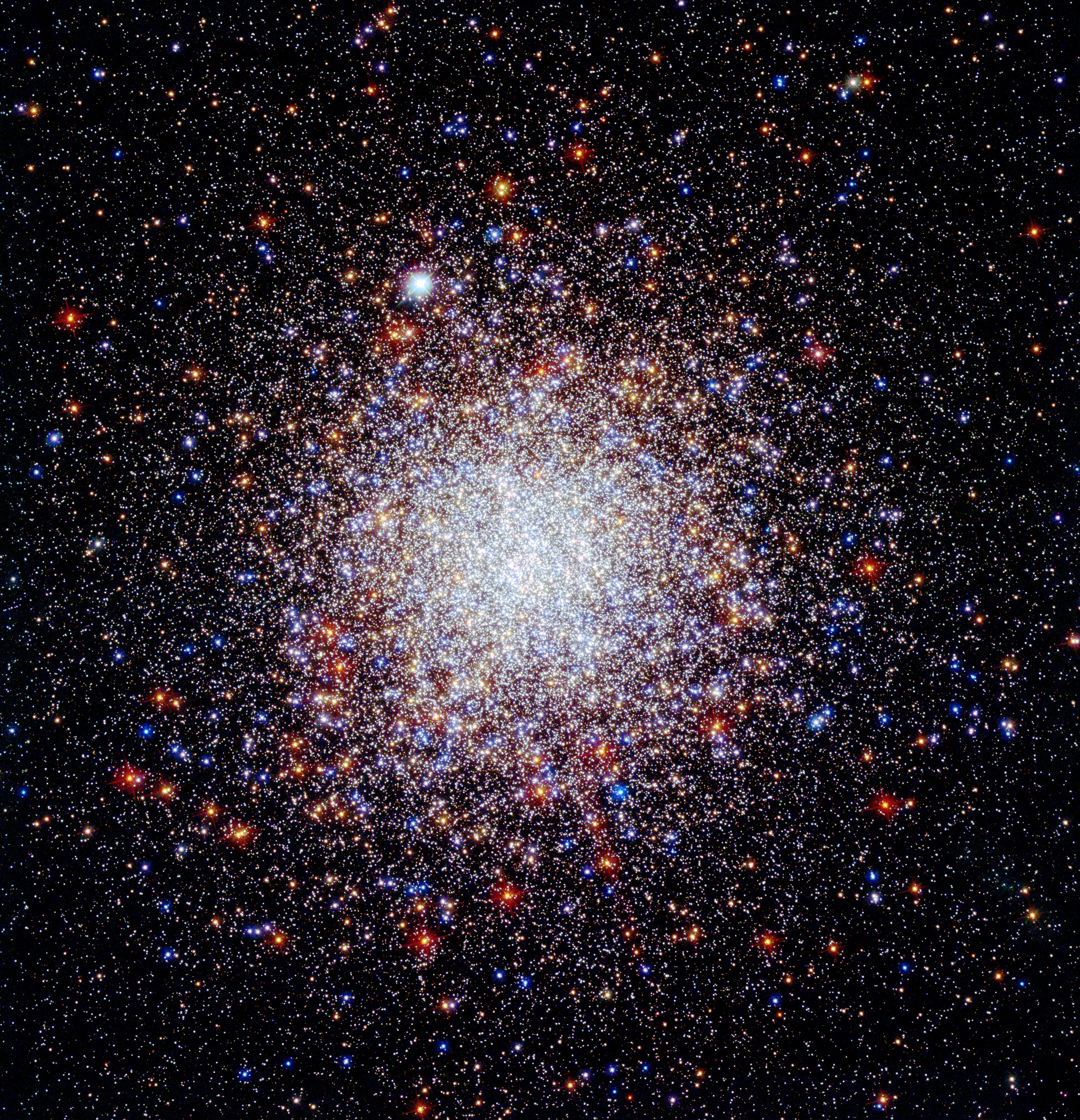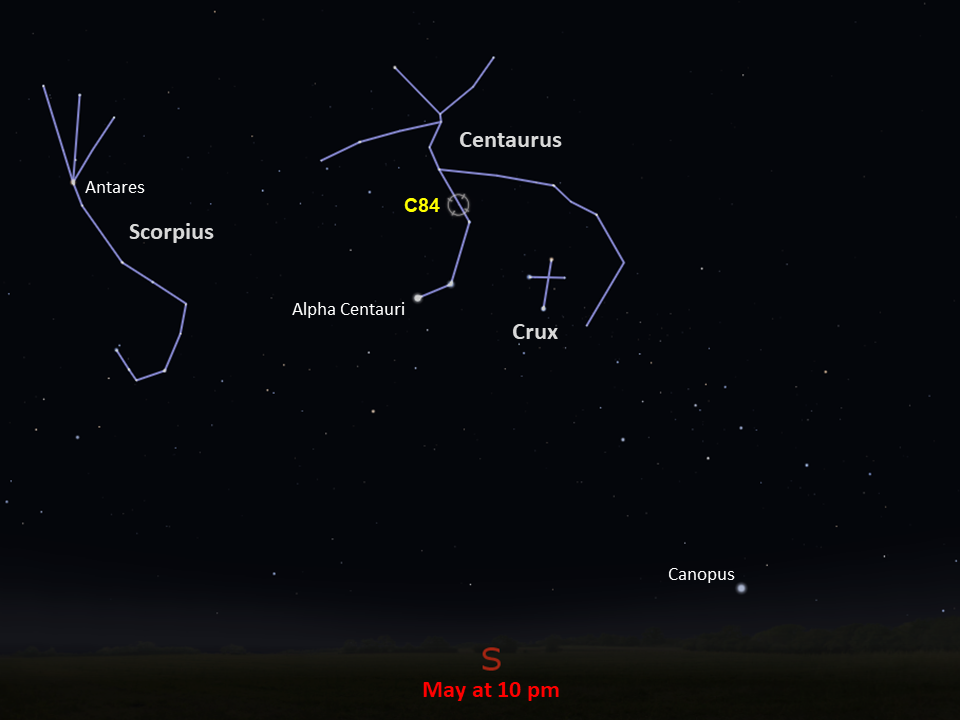Caldwell 84
Scattered light from a nearby bright star can interfere with observing this beautiful cluster.
Distance
35,000 light-years
Apparent Magnitude
7.6
constellation
Centaurus
object type
Globular Cluster

This image features the nearly spherical globular star cluster Caldwell 84. It is a composite of observations taken in visible and ultraviolet light by two of Hubble’s science instruments, the Advanced Camera for Surveys and the Wide Field Camera 3. These observations helped astronomers better understand the motions and chemical abundances of stars within the cluster. A relatively bright star, likely closer to us than the cluster is, appears to the upper left of the cluster’s center in Hubble’s image.
Astronomers have hypothesized that this globular cluster is a member of the “Gaia Sausage” — the remnants of a dwarf galaxy that is thought to have collided with the Milky Way between 8 million and 10 million years ago. As the dwarf galaxy merged with our galaxy, it was torn apart by the gravitational interaction, leaving behind several globular clusters and millions of stars with unusual orbits. Thanks to these unusual orbits, an elongated, sausage-like shape emerges when the velocities of these stars are plotted on a chart. Because globular clusters like Caldwell 84 generally form in larger galaxies, astronomers believe the dwarf galaxy that collided with the Milky Way was one of the largest of the Milky Way’s early satellite galaxies.
Also known as NGC 5286, Caldwell 84 was discovered in 1826 by the Scottish astronomer James Dunlop while he was observing in Australia. Located in the constellation Centaurus and boasting an apparent magnitude of 7.6, this globular cluster can be seen with a small telescope. However, scattered light from the nearby 4.6-magnitude star M Centauri can interfere with observing the cluster. It is most easily spotted during the Southern Hemisphere’s autumn. (Those located near the equator in the Northern Hemisphere can look for it in the late spring.) Caldwell 84 lies roughly 35,000 light-years from Earth and is among the oldest globular clusters in our Milky Way galaxy.

Glossary
Apparent Magnitude - The brightness of an astronomical object as seen from Earth, influenced by the object's distance from Earth, its absolute magnitude, and even gas and dust that lie between the object and Earth.
Dwarf Galaxy - A small, faint galaxy with only millions to a few billion stars.
Globular Cluster - A spherical group of stars that are gravitationally bound to each other, with most of the stars concentrated at the cluster’s center.
Satellite Galaxy - A galaxy that is gravitationally bound to a larger galaxy, much like how the planets in our solar system are gravitationally bound to the Sun.
Explore Hubble's Caldwell Catalog
The following pages contain some of Hubble’s best images of Caldwell objects.

Caldwell 1
Also known as NGC 188, this group of stars formed from a large cloud of gas making the stars roughly…

Caldwell 2
This shell of gas is expanding outward, away from the dying star within.

Caldwell 3
This barred spiral galaxy was first spotted by British astronomer William Herschel in April 1793 in the constellation Draco.




